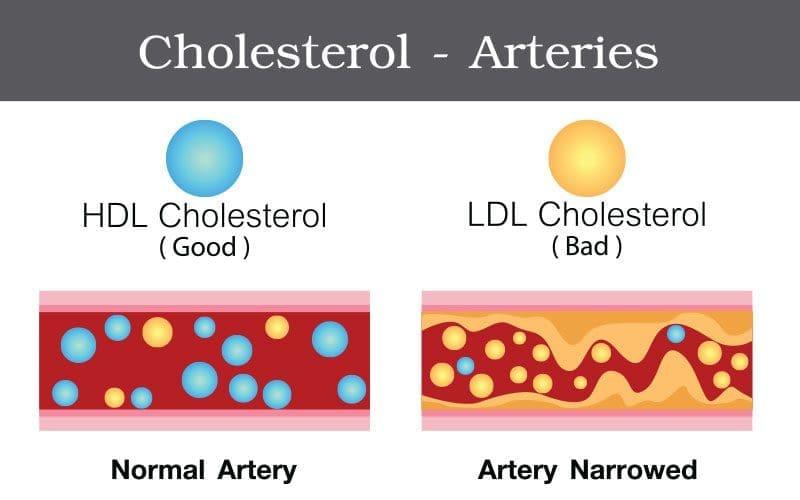In the intricate tapestry of human health, cholesterol often emerges as a villain in our dietary narratives, cast as the unwelcome guest at the table of wellness. Yet, like many stories, the truth is more nuanced than the headlines suggest. Is all cholesterol truly harmful, or is this waxy substance more multifaceted than its reputation implies? As we delve into the world of lipids, we will unravel the complexities of cholesterol, exploring its dual nature and the roles it plays within our bodies. Join us on this journey as we challenge common perceptions, dissect the science, and seek a balanced understanding of cholesterol’s impact on our health.
Understanding Cholesterol: The Good, The Bad, and The Essential
Cholesterol often gets a bad rap, but it plays a vital role in our bodies. It’s important to differentiate between the types of cholesterol to fully understand its impact on our health. HDL (High-Density Lipoprotein), often referred to as the “good” cholesterol, helps transport cholesterol away from the arteries and back to the liver, where it is processed and eliminated. LDL (Low-Density Lipoprotein), known as the “bad” cholesterol, can build up in the walls of arteries, leading to blockages and increasing the risk of heart disease. However, not all LDL is harmful; it’s the small, dense LDL particles that pose the greatest risk.
- HDL: Aids in removing excess cholesterol from the bloodstream.
- LDL: Essential for cellular function, but excess can lead to plaque buildup.
- Triglycerides: Another type of fat found in the blood, high levels can also contribute to heart disease.
Understanding these distinctions helps in managing cholesterol levels effectively. A balanced diet, regular exercise, and sometimes medication can aid in maintaining a healthy cholesterol profile. Remember, cholesterol itself is not the enemy; it’s the imbalance that can lead to health issues.

The Role of HDL and LDL in Heart Health
When discussing cholesterol, it’s crucial to differentiate between its two main types: High-Density Lipoprotein (HDL) and Low-Density Lipoprotein (LDL). HDL, often dubbed the “good” cholesterol, plays a beneficial role in heart health by helping to transport cholesterol away from the arteries and back to the liver, where it can be processed and eliminated from the body. This process is vital because it can help reduce the risk of plaque buildup, which can lead to heart disease. In essence, higher levels of HDL are associated with a lower risk of heart issues.
On the flip side, LDL, commonly referred to as the “bad” cholesterol, can contribute to the formation of plaque in the arteries. This buildup narrows the arteries and increases the risk of cardiovascular events such as heart attacks and strokes. It’s important to maintain a balance where LDL levels are kept in check. Strategies to manage these levels include:
- Adopting a diet rich in fruits, vegetables, and whole grains.
- Engaging in regular physical activity.
- Limiting saturated fats and trans fats.
- Maintaining a healthy weight.
Ultimately, understanding the distinct roles of HDL and LDL can empower individuals to make informed lifestyle choices that support heart health.

Debunking Myths: Cholesterol in Your Diet
It’s a common misconception that all cholesterol is detrimental to our health. In reality, cholesterol is an essential component for building cells and producing certain hormones. The key is understanding the difference between good and bad cholesterol. LDL (low-density lipoprotein) is often labeled as “bad” cholesterol because it can lead to plaque buildup in the arteries, increasing the risk of heart disease. On the other hand, HDL (high-density lipoprotein) is considered “good” cholesterol, as it helps transport cholesterol away from the arteries and back to the liver, where it’s processed and removed from the body.
- LDL Cholesterol: Aim to keep levels low. It can contribute to arterial blockage.
- HDL Cholesterol: Strive to maintain higher levels. It aids in reducing cardiovascular risk.
Incorporating a balanced diet rich in fruits, vegetables, and whole grains, while limiting saturated and trans fats, can help manage cholesterol levels effectively. By focusing on these dietary choices, individuals can promote better heart health without demonizing cholesterol entirely.

Practical Tips for Managing Cholesterol Levels
While cholesterol often gets a bad rap, it’s important to remember that it’s not all doom and gloom. In fact, our bodies need cholesterol to build cells and produce certain hormones. However, managing its levels is crucial for maintaining heart health. Here are some practical tips to help you keep your cholesterol in check:
- Eat a Heart-Healthy Diet: Incorporate more fruits, vegetables, whole grains, and lean proteins into your meals. Foods high in soluble fiber, like oats and beans, can help lower LDL (bad) cholesterol.
- Stay Active: Regular physical activity can help raise HDL (good) cholesterol while lowering LDL cholesterol. Aim for at least 30 minutes of exercise most days of the week.
- Limit Saturated and Trans Fats: These fats, found in red meat and processed foods, can increase cholesterol levels. Opt for healthier fats such as those found in nuts, seeds, and fish.
- Quit Smoking: If you smoke, quitting can improve your HDL cholesterol level and benefit your heart health in numerous ways.
- Moderate Alcohol Consumption: Drinking alcohol in moderation has been linked to higher levels of HDL cholesterol, but it’s important to balance this with the risks associated with alcohol consumption.
By making these lifestyle changes, you can effectively manage your cholesterol levels and reduce your risk of heart disease. Remember, it’s not about eliminating cholesterol but rather maintaining a healthy balance.
Future Outlook
As we navigate the intricate pathways of our bodies, cholesterol emerges as both a friend and foe, a dual role that underscores the complexity of our biological existence. It whispers tales of balance and moderation, urging us to look beyond the simplistic labels of “good” and “bad.” While science continues to unravel the mysteries of cholesterol, one truth remains clear: knowledge empowers. By understanding the multifaceted nature of cholesterol, we equip ourselves with the tools to make informed decisions about our health. So, as you close this chapter on cholesterol, remember that the story of wellness is one of harmony, where every element plays its part in the grand symphony of life. Stay curious, stay informed, and let the rhythm of health guide your journey.


































